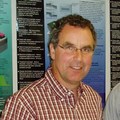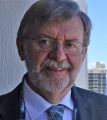SEASONAL USE OF WATER IN BALANCE WITH A CHANGING WATER CYCLE: “The City sees the BC Landscape Water Calculator helping us manage our peak demand. I like that the calculator will be able to show people just how much they can reduce their water use,” stated Amy Peters, coordinator of the City of Abbotsford water conservation program

“Many homeowners are now familiar with how much they are using because the number is on their utility bill. It really is important that they be able to see how much outdoor water use contributes to their total water demand. The BC Landscape Water Calculator does this. We are encouraging people to transform their front yards by replacing grass with water efficient plants. We are promoting both water efficient and native plants. The BC Landscape Water Calculator provides them with choices for both,” stated Amy Peters.










